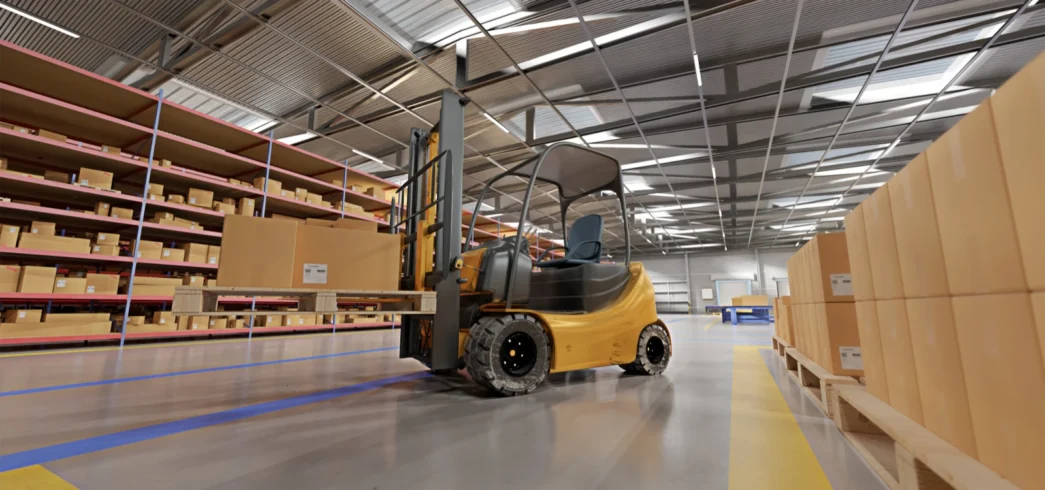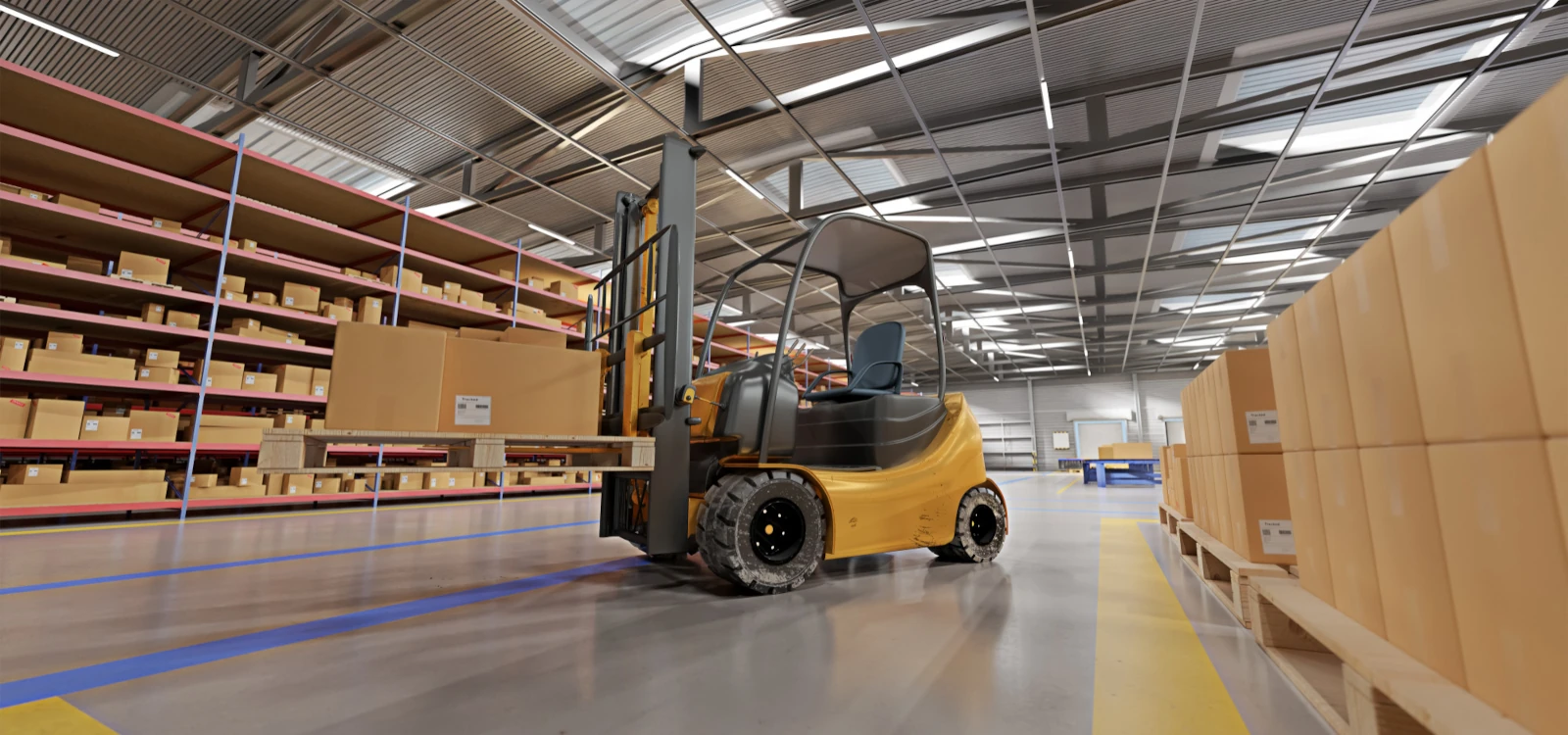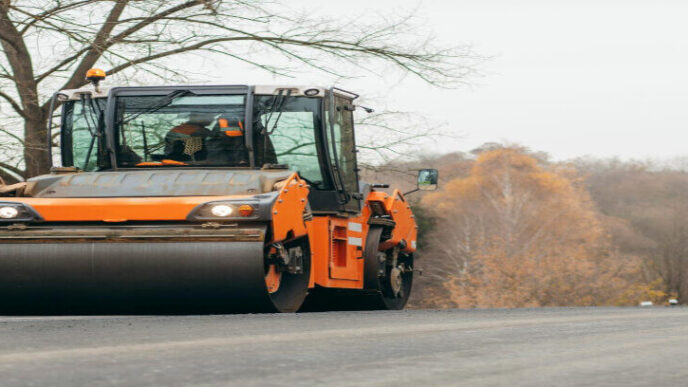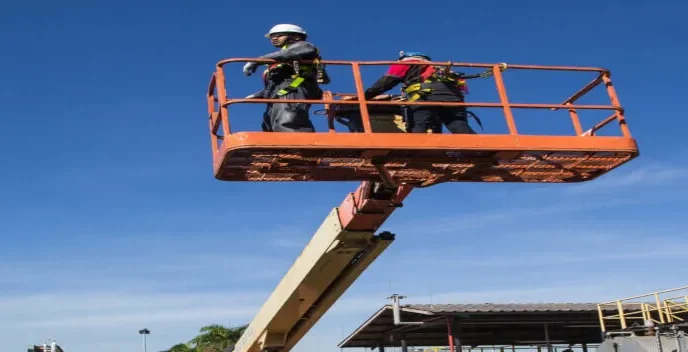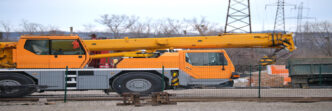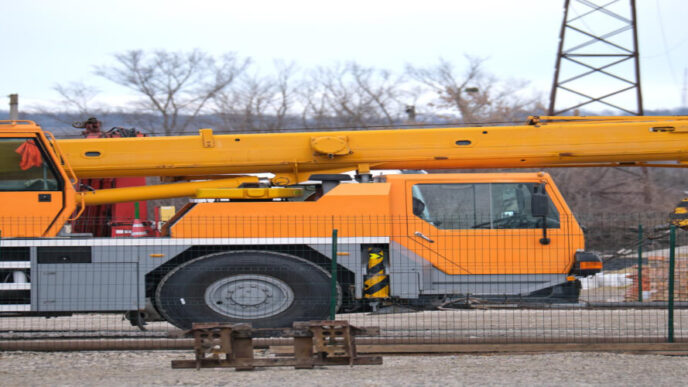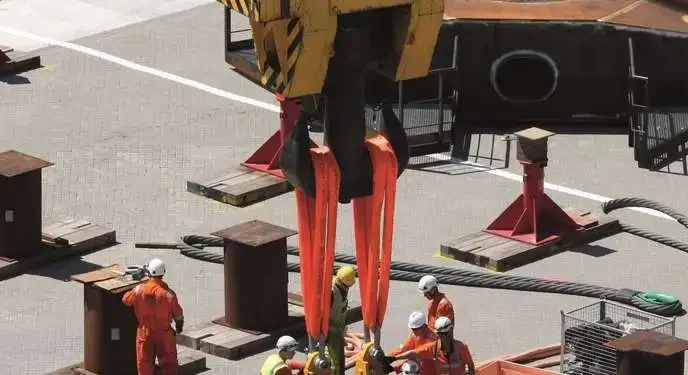Nome Técnico: TRAINING COURSE NR-11 SAFETY IN FORKLIFT OPERATION
Referência: 197824
We provide courses and training; We carry out Translations and Versions in Technical Language: Portuguese, English, Spanish, French, Italian, Mandarin, German, Russian, Swedish, Dutch, Hindi, Japanese and others consult
Forklift Course
How is the Forklift Course?
The Forklift Course aims to provide technical knowledge on transport, movement, storage and handling of materials using an electric forklift , LPG forklift or diesel forklift as recommended by NR 11 , logically that each type of forklift is a training to be be administered according to the Instruction Manual for each Machine or Equipment.
What is Forklift?
Industrial vehicle that moves the transport of cargo volumes. The most used forklifts are: electric and combustion (LPG and Diesel).
What are the Main Types of Forklifts?
Internal combustion forklift;
Electric counterbalance forklift;
Retractable forklift;
Side Fork Forklift;
Forklift for rough terrain;
Reach forklift;
It is worth mentioning that the Training must be specific for each equipment , according to model, brand, type and year.
(a) The Instructors are Engineers who master the Technical languages in Portuguese, German and English, Mandarin, Spanish, among others with international know-how and active Passports.
(b) All Professionals have mandatory Occupational Safety Training NR 10, NR 35, NR 33, NR 12, among others, updated and valid.
(c) Upon completion, certificates of participation and achievement will be issued, signed with electronic digital signatures by legally qualified professionals with active CREA:
Work Safety Engineer (Technical Responsible) with active CREA /ART;
Engineer. Electric/Sec. Work (Instructor) with active CREA /ART;
Occupational Physician with active CRM;
Technical Instructor for Fire Fighting, First Aid and Chemical Emergencies;
Click on the Link: Criteria for Issuing Certificates according to the Norms
Treinamento Livre Profissionalizante Noções Básicas (Não substitui Formação Acadêmica ou Ensino Técnico)Certificado de conclusão
Forklift Course
Normative Programmatic Content:
Terms and definitions;
Care when using a forklift;
Forklift knowledge;
Forklift transport;
Storage;
Preparation before use;
Operation, use and safety:
Analysis of the instruction and operation manual;
Profile and responsibilities of the Operator;
Basic principles of operation;
Driving and Operation;
Use of New Equipment;
Connection Between Load and Stability;
Load Center and Load Curve;
Parts and operation of the machine;
Loading and unloading of goods;
Preparation Before the Operation;
Direction;
Forklift types;
Maneuvers/Balance Point;
Load Center: Capacity;
Incidents, accidents, cause and consequences;
Chargers, batteries, recharges, installation and care;
Components;
Mechanical, hydraulic, electrical and power supply;
Safety problems;
Place of operation and work environment;
Climate conditions;
Security rules.
Complements for Machines and Equipment, when applicable:
Awareness of the Importance:
Machine or Equipment Operation Instruction Manual;
Machine or Equipment Inspection and Maintenance Plan following NR 12;
Technical Report with ART of the Machine or Equipment according to NR 12;
Load Test (with ART) according to NR 12;
NDT (Non-Destructive Tests) according to NR 12;
Electrical Tests NR 10;
Machinery and Equipment Tagging;
RETROFIT – Modernization Process;
Daily Checklist;
Occasional or cyclical maintenance.
Complements of the Activity – Awareness of the Importance:
APR (Preliminary Risk Analysis);
PE (Emergency Plan);
PGR (Risk Management Plan);
ORM (Occupational Risk Management);
Understanding the need for the Rescue Team – NBR 16710;
The Importance of task knowledge;
Accident prevention and first aid notions;
Fire protection – NBR 14276;
Perception of risks and factors that affect people’s perceptions;
Impact and behavioral factors on safety: Fear factor;
How to discover the fastest and easiest way to develop Skills;
How to control the mind while working;
How to administer and manage working time;
Why balance energy during activity in order to gain productivity;
Consequences of Habituation to Risk;
Causes of accidents at work;
Notions on Tree of Causes;
Understanding about Ergonomics, Workstation Analysis and Ergonomic Risks.
Basic notions of:
HAZCOM – Hazard Communication Standard;
HAZMAT – Hazardous Materials (Hazardous Materials);
HAZWOPER – Hazardous Waste Operations and Emergency Response;
PDCA Cycle (Plan-Do-Check-Act) – ISO 45001;
FMEA – Failure Mode and Effect Analysis;
SFMEA – Service Failure Mode and Effect Analysis;
PFMEA – Process of Failure Mode and Effects Analysis;
DFMEA – Design Failure Mode and Effect Analysis;
Analysis of failure modes, effects and criticality (FMECA);
Bow Tie Tool (Risk Management Process Analysis);
Accident Analysis Tool – TRIPOD Method;
Hazard Communication Standard (HCS (Hazard Communication Standard) – OSHA.
Practical Exercises:
Registration of Evidences;
Theoretical and Practical Assessment;
Certificate of participation.
NOTE:
We emphasize that the General Normative Programmatic Content of the Course or Training may be changed, updated, adding or deleting items as necessary by our Multidisciplinary Team.
Our Multidisciplinary Team is entitled to update, adjust, change and/or delete items, as well as insert or exclude Rules, Laws, Decrees or technical parameters that they deem applicable, whether related or not, and the Contracting Party is responsible for making the necessary calls. in accordance with the relevant legislation.
Forklift Course
Participants without experience:
Minimum workload = 40 hours/class
Participants with experience:
Minimum workload = 16 hours/class
Update (Recycling):
Minimum workload = 08 hours/class
Updating (Recycling): The employer must carry out periodic training Annually and whenever any of the following situations occur:
a) change in procedures, conditions or work operations;
b) event that indicates the need for new training;
c) return to work for a period exceeding ninety days;
d) change of company;
e) Change of machine or equipment.
Normative References (Sources) to the applicable devices, their updates and replacements to date:
NR 01 – General Provisions and Management of Occupational Risks;
NR 11 – Transport, Handling, Storage and Handling of Materials;
NR 12 – Safety at Work with Machinery and Equipment;
ABNT NBR 12147 – Forklift trucks – Fuel filter for feeding alternative internal combustion engines using liquefied petroleum gas – Method for checking tightness;
Instruction manual;
ABNT NBR 16746 – Safety of machines – Instructions Manual – General elaboration principles;
ABNT NBR ISO 13850 – Machinery Safety – Emergency stop function – Design principles;
ABNT NBR ISO 14121-2 – Safety of machinery – Risk assessment;
ABNT NBR ISO/CIE 8995 – Workplace lighting;
ABNT NBR 9735 – Set of equipment for emergencies in land transport of dangerous goods;
Protocol – Guidelines American Heart Association;
ISO 10015 – Quality management – Guidelines for competence management and people development;
ISO 45001 – Occupational health and safety management systems – Requirements with guidance for use;
ISO 56002 – Innovation management – Innovation management system;
Target Norms;
Brazilian Association of Technical Standards – ABNT;
note:This Service exclusively meets the requirements of the MTE (Ministry of Labor and Employment) when dealing with other Bodies, inform in the act of request.
Our pedagogical project follows the guidelines imposed by Regulatory Standard nº1.
After the payment, Purchase Order, Contract signed between the parties, or other form of closing confirmation, the didactic material will be released within 72 working hours (up to 9 days), due to the adaptation of the syllabus and adaptation to the Standards Techniques applicable to the scenario expressed by the Contracting Party; as well as other adaptations to the didactic material, carried out by our Multidisciplinary Team for technical language according to the student’s nationality and Technical Operational and Maintenance Instruction Manuals specific to the activities that will be carried out.
PDCA (Plan-Do-Check-Act) Cycle
The OHS management system approach applied in this document is based on the Plan-Do-Check-Act (PDCA) concept.
The PDCA concept is an iterative process used by organizations to achieve continuous improvement. It can be applied to a management system and each of its individual elements as follows:
a) Plan: determine and assess OH&S risks, OH&S opportunities, other risks and other opportunities, establish objectives and the OH&S processes necessary to ensure results in accordance with the organization’s OH&S policy;
b) Do (Do): implement the processes as planned;
c) Check: monitor and measure activities and processes against the OH&S policy and OH&S objectives and report the results;
d) Act: take steps to continuously improve OH&S performance to achieve intended results.
Occupational health and safety management systems – Requirements with guidance for use Stakeholder;
Stakeholder – Person or organization that can affect, be affected by, or perceive itself to be affected by, a decision or activity.
The justification for the Price and Value relationship:
The pricing of any service requires expertise related to the business world and the concept of Value is qualitative, directly linked to the potential for transformation existing in that content. The service has more value when it has professional knowledge and secrets added and the price is a variable consequent to the value, whose objective is to transmit it in numbers. Thus, the greater the value added to the content, the greater its fair price. Therefore, we do not authorize the use of our Proposals as proof of closing with third parties with a lower price, or of secondary interest. Quality, Safety, Efficiency and Excellence, in every sense, are our values.
Causes of the Work Accident:
Lack of warning from the employer;
Lack of employee care;
Even after carrying out all the mandatory Occupational Safety and Health Training and Reports, in the event of an accident at work, the employer will be subject to Processes such as:
Police Inquiry – Civil Police;
Expertise through the Criminalist Institute;
Investigation Procedure at the Regional Labor Office;
Civil Public Inquiry before the Labor Public Prosecutor’s Office to verify that the other workers are not in danger;
The INSS will question the cause of the accident that could have been avoided and refuse to pay the benefit to the employee;
Relatives may file a lawsuit in the Labor Court claiming Moral, Material, Dislocation, etc.;
Procedural Tsunami forcing the Employer to generate Defense Strategy even if it is right;
Although the Labor Delegation Law does not provide that “culpa en vigilando” applies, but only the responsibility for delivering the equipment, it is worth noting that the Employer is also responsible for keeping watch;
When an accident occurs, in addition to destroying all the “good humor” in the relations between employees or also the very serious problem of defending oneself from a series of procedures at the same time, then it is worth investing in this prevention;
The Employee cannot carry out activities exposed to risks that could compromise his safety and health, so the Employer will be able to respond in the criminal and civil spheres.
Learn More: Forklift Course
Prescriptions for Forklift Use. Operator Qualification: For safety reasons, the forklift can only be used by personnel sufficiently trained in their function and who have demonstrated to the supervisor in charge their aptitude for driving the same and obtain aptitude in the clinical examinations in agreement with the doctor.
Rights, duties and rules of behavior for the driver: The driver must have been instructed about his rights and duties, as well as how to use the vehicle, so he must know the contents of this instruction manual. The required rights must be guaranteed.
Prohibited use by unauthorized personnel: The driver is responsible for the vehicle during the time he is using it. He has to prevent its use or handling by unauthorized persons. It is forbidden to transport or lift people.
Defects and Breakdowns: Defects and breakdowns of the forklift must be immediately communicated to the person responsible for proper repairs to the defects or breakdowns. Forklifts that do not present safety conditions (for example, worn tires or defective brakes) must not be used until they are properly repaired.
Repairs: Drivers who have not received special training and express authorization cannot carry out any repairs or modifications to the vehicle. It is absolutely forbidden to disconnect, deactivate or change the setting of switches and safety devices.
Danger zone: The danger zone is one in which people or property are at risk due to the movement or lifting of the vehicle, its load-bearing elements (for example, forks or other accessories) or the load itself . The perimeter belongs to the danger zone where there is the possibility of a load falling or where the downward movement or the fall of a work device is possible.
Note: Strangers must be kept away from the danger zone. When there is a risk to people, a warning signal (horn) must be activated in time. If, despite the abandonment request, there are those who remain in the danger zone, the vehicle must be stopped immediately.
Source: Forklift Operators Manual
Internal Combustion Forklift: These forklifts are powered by internal combustion engines such as gas (LPG), diesel or gasoline engines. They are commonly used outdoors where ventilation is adequate due to exhaust emissions. They are suitable for moving heavy loads and are widely used in warehouses, ports and industries.
Electric Counterbalance Forklift: These forklifts are powered by electric motors and are powered by rechargeable batteries. They are popular in indoor environments such as warehouses and factories due to their quiet, emission-free operation. They are also ideal for working in confined spaces due to their compact design.
Reach Forklift: These forklifts are designed to reach greater lift heights than conventional forklifts. They have retractable arms that allow you to extend and retract the load, allowing them to operate in narrow aisles. They are commonly used in warehouses with high shelving systems.
Side Fork Forklift: Also known as offset fork trucks, these forklift trucks have forks that can move sideways. This allows them to handle loads in narrow aisles and reach shelves without having to reposition the forklift.
Rough Terrain Forklift: These forklifts are designed to operate on uneven and rough terrain such as construction sites or outdoor areas with unpaved surfaces. They are equipped with off-road tires and enhanced suspension features for greater stability and traction in difficult conditions.
Reach Forklift: These forklifts are similar to reach trucks but have the ability to extend the forks and tilt the load forward. This allows them to reach and handle loads in deep shelves, while maintaining stability.
URL PHOTO
Licensor’s author: Perig76 – Freepik.com
Forklift Course: Consult us.

